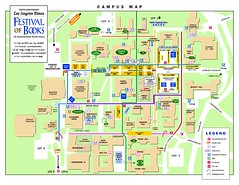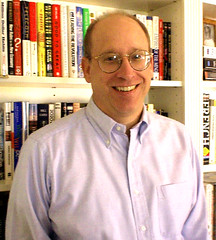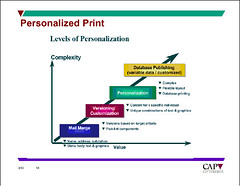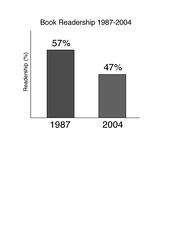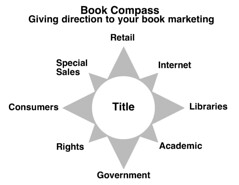The old adage, “you don’t judge a book by its cover” is wrong. We do judge books by their covers. 175,000 new books were published in 2004. How does a reader differentiate between all these choices? One way is by selecting a book with a cover that is pleasing.
There is a standard cover design for fiction and non-fiction books. This posting will explore the elements of a non-fiction book cover. The rules apply for both a hard cover and paperback non-fiction title.
The layout for printing a book cover is counter intuitive to many non-printers; the back cover is on the left, followed by the spine, followed by the front cover. A dust jacket for a hard cover book is laid out the same way with the back flap first, followed by the back cover, the spine, the front cover and the front flap.
Real estate on a book’s cover is valuable selling space. Book authors and publishers would do well to remember they are called “best selling” books for a reason.
The front cover must be eye-catching. It contains the book’s title and author by-line. Equally important is the subtitle to the book. The subtitle allows the author to more fully explain what the book is about. Examples of good titles with subtitles include: “Action! Nothing happens until something moves,” and “Beyond the Bookstore. How to sell more books profitably to non-bookstore markets.”
The test of an eye-catching book cover is to view it from across the room. If the book is visible and intriguing from across the room, it will display well in a bookstore. A similar test is to reduce the digital file of the book cover to three inches by three inches. If the cover is visible and intriguing at that size, it passes the same test as viewing it from across the room.
The book’s spine should have three elements: the books title, the author’s name and the publisher’s name or logo. Some consultants suggest printing the books title in a vertical stack so it’s legible when the book is displayed spine out in the bookstore. This is unconventional and a matter of personal choice.
The back cover is the most important part of the book cover design. This, too, sounds counter intuitive until one considers that the book’s back cover is what convinces readers to buy books. Studies have shown that a book buyer in a store follows this pattern when deciding on a purchase. They pick up the book based on its cover or its title on the spine. They look at the front cover. If that appeals to them, they turn the book over and spend time reading the back cover. Based on what they read on the back cover, they either put the book down or purchase it.
What differentiates a back cover that buyers like and one that they reject? There are several common elements to a back cover. At the top left-hand corner of the page is the category for the book. This category designation tells the book stocker (who is typically a minimum wage earner) where to place the book within the bookstore. Next is the back headline. This headline is different than the book’s title to make the best use of the limited cover space. For “The Self-Publishing Manual” by Dan Poynter, the back headline reads, “Why not publish yourself?” Following the headline is a brief description of the book. State what the book covers. Next, list the promises and benefits of your book; typically as bullet pointed items. Follow the promises with testimonials. Three testimonials is the ideal number. Try to have testimonials from a variety of people in a variety of industries. Give a brief author biography to validate why the author is qualified to write the book. And close with a statement designed to induce the buyer to purchase the book. The bottom of the book is filled with the ISBN number, bar code and price. These elements are combined into the EAN barcode.
There are several key items to remember when it comes to cover design. First, consider the testimonials. Potential buyers read the names of the people giving the testimonial. They look to see who wrote them before they buy. In today’s crowded book marketplace, will buy books from testimonials given by people with whom they identify. Select your testimonials wisely.
Second, the width of the spine is a critical measurement to provide the book designer. The spine width is calculated by taking the number of pages in the book, dividing that number by two (pages are printed on both sides) and multiplying by the width of a single sheet of paper (sometimes called the paper’s caliper). The spine size varies, therefore by the number of pagers and the paper stock selected. A 60 lb white, offset paper is thicker than a 50 lb white, offset paper, for instance. It isn’t always so easy to judge a paper’s thickness, however. In the Imperial measurement system, paper calipers are not logical. Consult your paper vendor’s price book for exact paper thicknesses.
Third, think four-color covers versus one- or two-color covers. With today’s equipment, four-color is nearly the same price as two-color. What’s more, to attract attention in the marketplace, four-color covers stand out better than one- or two-color covers.
